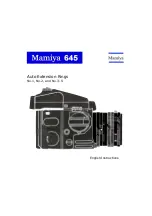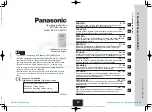
10
Manual: Cool-Ceramic Safety Herschel Prism Mark II
band filtering (there is still enough image bright-
ness) is noticeable in a clear increase in contrast of
the solar image. This makes much higher magnifi-
cations possible.
In addition, the granulation of the sun can be
observed with particularly high contrast in this
spectral range.
Furthermore, the BAADER Solar Continuum Filter
generally minimizes the effects of seeing (air tur-
bulence), because the short-wave light below 535
nanometres is blocked (the longer the wavelength
of the light, the less noticeable are thermally indu-
ced seeing effects).
With apochromatic (very high-quality, colour
error-free) refractors (e.g. Astro Physics, TEC), it
may be possible to work without the Solar Con-
tinuum Filter visually and observe the sun in pure
white light with the same contrast as is possible
with simpler achromatic optics using only the
Solar Continuum Filter. Especially when photogra-
phing with monochrome cameras, however, even
high-quality apochromats benefit from the use of
the Solar Continuum Filter.
The two images on the right show the sun once
without and once with the Solar Continuum Filter
in a 150/2250 Zeiss AS refractor. In the upper image, an additional ND 0.9 filter was
used to achieve comparable exposure times and to compensate for the influence of air
turbulence for this comparison.
The ND-Filters
The plano-optically polished neutral density filter (grey filter) ND 3.0 (T=0.1%)
# 2458332
is pre-installed on delivery and must not be removed under any circumstances for
visual observation, but must be supplemented by another filter.
The photographic version of the Herschel prism comes with three additional neutral
density filters. These filters are used to achieve a sufficiently bright image when photo-
graphing with long focal lengths (or slow focal ratios).
If the camera image is too dark, first remove any built-in optional polarising filter be-
fore replacing the ND 3.0 with the ND 1.8 or even weaker filters. You can also combine
two filters to achieve the desired brightness.
After each use, always rebuild the Herschel prism to the visual con-
figuration (ND3+SC filters) – this will help you avoid using the it for
visual observation with the wrong filters, when you may not check
beforehand that the correct filters are in place .
The sun in a Zeiss AS 150/2250 telescope,
with similar exposure times. Above: Herschel
prism, ND3 and ND0,9; below: Herschel
prism, ND3 and Solar Continuum 7,5nm.











































